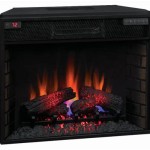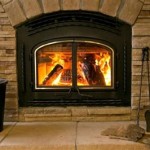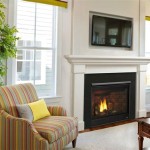Fire And Ice Fireplace Inserts: A Comprehensive Overview
Fire and ice fireplace inserts represent a modern approach to home heating and aesthetics, offering a unique blend of visual appeal and functional heating capabilities. These inserts, characterized by their dynamic flame displays and potential for color customization, have gained considerable popularity among homeowners seeking a contemporary alternative to traditional gas or wood-burning fireplaces.
This article will explore the defining features of fire and ice fireplace inserts, the technology underpinning their operation, installation considerations, safety aspects, and the various factors influencing their cost and overall value proposition. The discussion aims to provide a thorough understanding of these innovative heating appliances.
Understanding Fire and Ice Aesthetics
The primary draw of fire and ice fireplace inserts lies in their distinctive visual impact. Unlike conventional fireplaces that emulate the burning of wood or gas, these inserts utilize LED lighting and strategically placed crystals or acrylic media to create the illusion of flames rising from a bed of shimmering, icy-looking material. This effect is achieved through sophisticated light manipulation and reflection, resulting in a mesmerizing and customizable display.
Many models offer a range of color options for both the "flames" and the media bed, granting homeowners the ability to tailor the fireplace's appearance to match their décor or personal preferences. These customizable color palettes often include various shades of blue, purple, green, orange, and red, allowing for a dynamic and adaptable visual experience. The intensity and speed of the "flames" can also typically be adjusted, further enhancing the personalization options.
The use of LED technology is crucial to the success of the fire and ice aesthetic. LEDs are energy-efficient, long-lasting, and produce minimal heat, making them ideal for creating realistic flame effects without the safety concerns associated with traditional heat sources. Furthermore, the precise control offered by LEDs enables the creation of intricate and dynamic lighting patterns that contribute to the overall illusion.
Operational Technology and Heating Capabilities
Fire and ice fireplace inserts are typically electric fireplaces, meaning they operate on electricity and do not require gas lines or chimneys. This simplifies installation and contributes to their versatility in terms of placement within a home. The heating function is generally provided by an electric resistance heater, which warms the air that is then circulated into the room by a fan.
The heating capacity of these inserts is measured in British Thermal Units (BTUs), and the appropriate BTU rating will depend on the size of the room to be heated and the overall insulation of the home. Many models offer adjustable heat settings, allowing users to control the amount of heat produced and optimize energy consumption. It is important to note that while fire and ice fireplace inserts can provide supplemental heating, they are typically not intended as a primary heating source for an entire house.
Beyond the heating function, many models incorporate additional features such as timers, thermostats, and remote controls. Timers allow users to schedule the fireplace to turn on and off at specific times, while thermostats maintain a consistent room temperature. Remote controls provide convenient control over the fireplace's settings from anywhere in the room. Modern smart fireplace inserts can even be controlled via smartphone apps or voice assistants, further enhancing their user-friendliness.
The energy efficiency of a fire and ice fireplace insert is an important consideration for homeowners. Electric fireplaces are generally more energy-efficient than traditional wood-burning fireplaces, as they do not lose heat up a chimney. However, the actual energy consumption will depend on the specific model, the heat setting used, and the frequency of operation. It is advisable to look for models with energy-saving features, such as adjustable thermostats and automatic shut-off timers.
Installation, Safety, and Maintenance Considerations
Installing a fire and ice fireplace insert is generally a straightforward process, especially compared to installing a gas or wood-burning fireplace. Since they are electric, they do not require venting or gas lines, which eliminates the need for complex construction or permits in many cases. Installation typically involves placing the insert into an existing fireplace opening or a purpose-built enclosure and plugging it into a standard electrical outlet. Wall-mounted options are also available, offering even greater flexibility in terms of placement.
However, it is crucial to ensure that the electrical outlet is properly grounded and capable of handling the electrical load of the fireplace insert. Consulting with a qualified electrician is recommended to verify the electrical system's capacity and ensure safe installation. Furthermore, it is essential to follow the manufacturer's instructions carefully during installation to avoid any potential hazards.
Safety is a paramount concern with any heating appliance. Fire and ice fireplace inserts are generally considered safe, as they do not produce open flames or emit harmful fumes. However, it is still important to take precautions to prevent accidents. The surface of the fireplace insert can become hot during operation, so it is advisable to keep flammable materials away from the unit and to supervise children and pets when the fireplace is in use. Some models have a cool-touch glass front to minimize burn risks.
Regular maintenance is essential to ensure the longevity and optimal performance of a fire and ice fireplace insert. The LED lights typically have a long lifespan, but they may eventually need to be replaced. The crystals or acrylic media may also need to be cleaned periodically to remove dust and debris. Cleaning can typically be done with a soft cloth and mild detergent. It is important to consult the manufacturer's instructions for specific maintenance recommendations.
Cost, Value, and Market Trends
The cost of a fire and ice fireplace insert can vary widely depending on the size, features, brand, and overall quality of the unit. Entry-level models may be available for a few hundred dollars, while high-end models with advanced features and custom designs can cost several thousand dollars. The overall value proposition of a fire and ice fireplace insert depends on individual needs and preferences.
Consideration should be given to the cost of installation, which may include electrical work. Furthermore, the ongoing operating costs, primarily the electricity consumption for heating and lighting, should be factored into the overall cost analysis. While gas fireplaces may have higher fuel costs in some areas, electric fireplaces can contribute significantly to electricity bills, especially if used frequently.
The market for fire and ice fireplace inserts has been growing steadily in recent years, driven by increasing demand for contemporary and energy-efficient heating solutions. Technological advancements have led to improvements in flame realism, energy efficiency, and connectivity features. The availability of a wide range of styles, sizes, and customization options has also contributed to the growing popularity of these inserts.
The trend toward smart home integration is also influencing the market, with more models incorporating Wi-Fi connectivity and compatibility with voice assistants. This allows users to control their fireplace inserts remotely, adjust settings, and even integrate them into broader home automation systems. In addition, ongoing developments in LED technology and materials science are expected to further enhance the visual appeal and performance of fire and ice fireplace inserts in the future.
The sustainability aspect is also increasingly important for consumers. Electric fireplaces, while relying on electricity, can be powered by renewable energy sources, making them a potentially more environmentally friendly option compared to traditional fireplaces. The absence of wood burning eliminates the emission of particulate matter and other pollutants, contributing to cleaner air quality.
Ultimately, the decision to invest in a fire and ice fireplace insert depends on a careful evaluation of individual needs, preferences, and budget considerations. Understanding the technology, installation requirements, safety aspects, and long-term costs is crucial for making an informed decision. By carefully weighing these factors, homeowners can determine whether a fire and ice fireplace insert is the right choice for their home.

Fire And Ice Fireplace I Totally Want To Do This In My Family Room Glass

Fire And Ice Fireplace I Totally Want To Do This In My Family Room Glass

Northwest 54 In Led Fire And Ice Electric Fireplace With Remote Black 80 2000a The Home Depot

Northwest 54 In Led Fire And Ice Electric Fireplace With Remote Black 80 2000a The Home Depot

Fire And Ice Fireplace Makeovers 12 Photos La Quinta Services Phone Number Yelp

Dimplex 33 Inch Multi Fire Xhd Electric Firebox Insert With Acrylic Glass Xhd33g Plug In Fireplace Fireplaces Depot

Amantii 33 In Traditional Smart Fire Ice Electric Insert 2024 Built Fireplace Gas Red Led Lights

Fire And Ice Fireplace Makeovers 12 Photos La Quinta Services Phone Number Yelp
-800x800.JPG?strip=all)
1524mm Flush Insert Or Wall Hung Designer Electric Fireplace 2024 Model

Amantii Traditional 26 Inch Built In Indoor Outdoor Electric Firebox Insert Fireplace Heater Trd Fireplaces Depot
Related Posts








